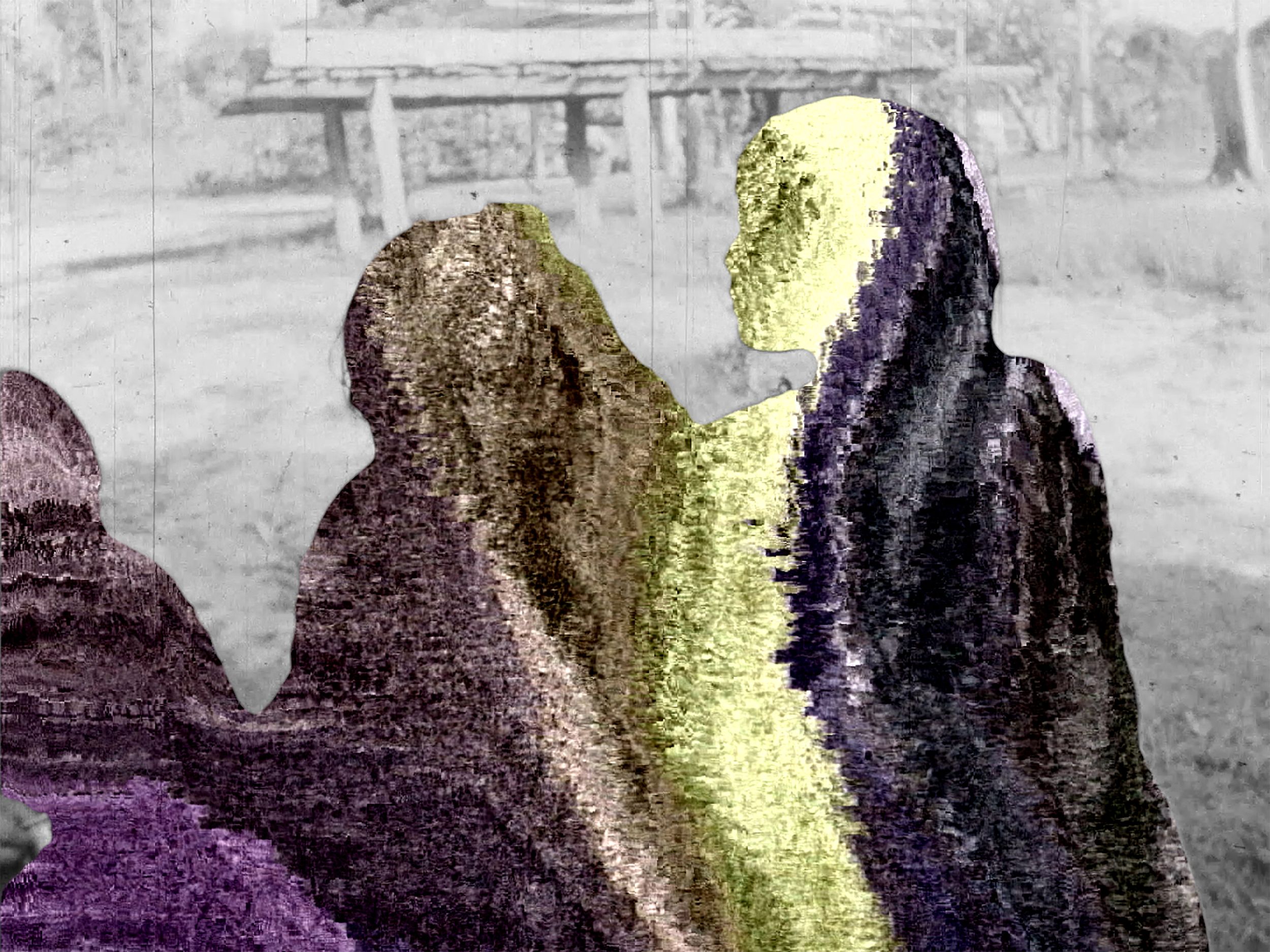
Like the Glitch of a Ghost
Alapadu is a village in the Amazon rainforest in the interior of Suriname, which in the 1950s was a Dutch colony. In a film produced by the Diaconal Institute of the Dutch Reformed Church, which ended up in the archives of the Eye Film Museum, the inhabitants are still referred to as ‘Indians.’
However, the central figure in the film is a young white missionary who works there as a nurse. She dresses wounds, hands out medicine for worm infections, gives advice here and there, and teaches children the basics of Dutch so they can “have some command of the language” if they have go to the capital city, Paramaribo.
She means well, but her attitude and use of language are paternalistic and overtly racist. The indigenous people are portrayed as big children who, according to the voice-over, “live on the verge of the Stone Age.” They are dirty, poor and pitiful, but are fortunately saved by a Florence Nightingale with horn-rimmed glasses and crisp diction. Paula Albuquerque exposes the intensity of this colonial condescension by introducing a ‘glitch’ in the film that obscures everyone who appears, except for the missionary worker. By removing them from an objectifying gaze, she restores their sovereignty.
Stills
















